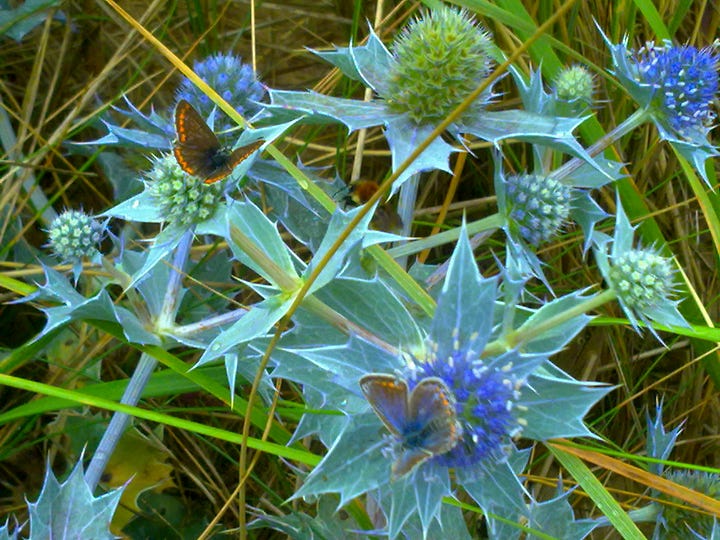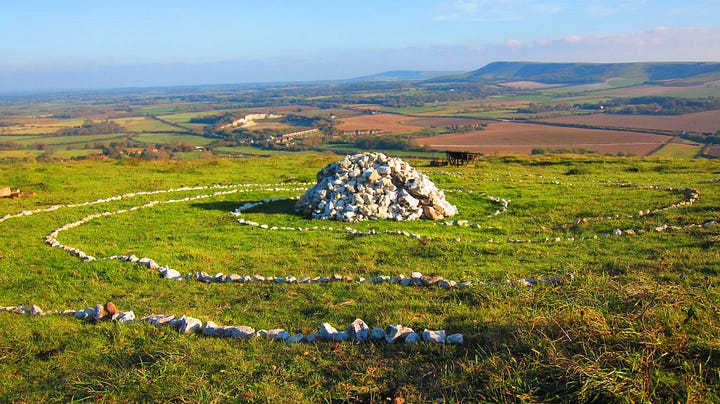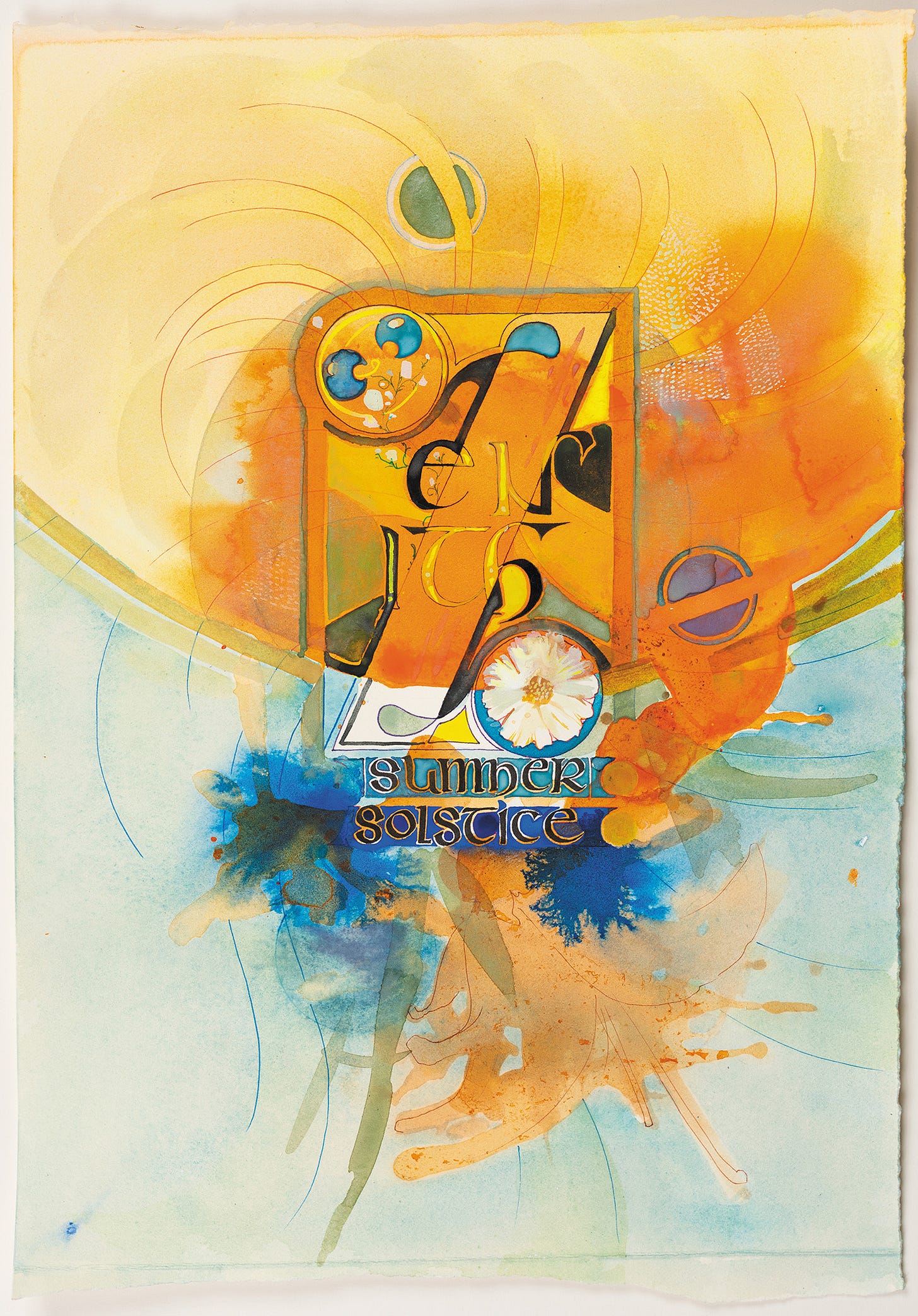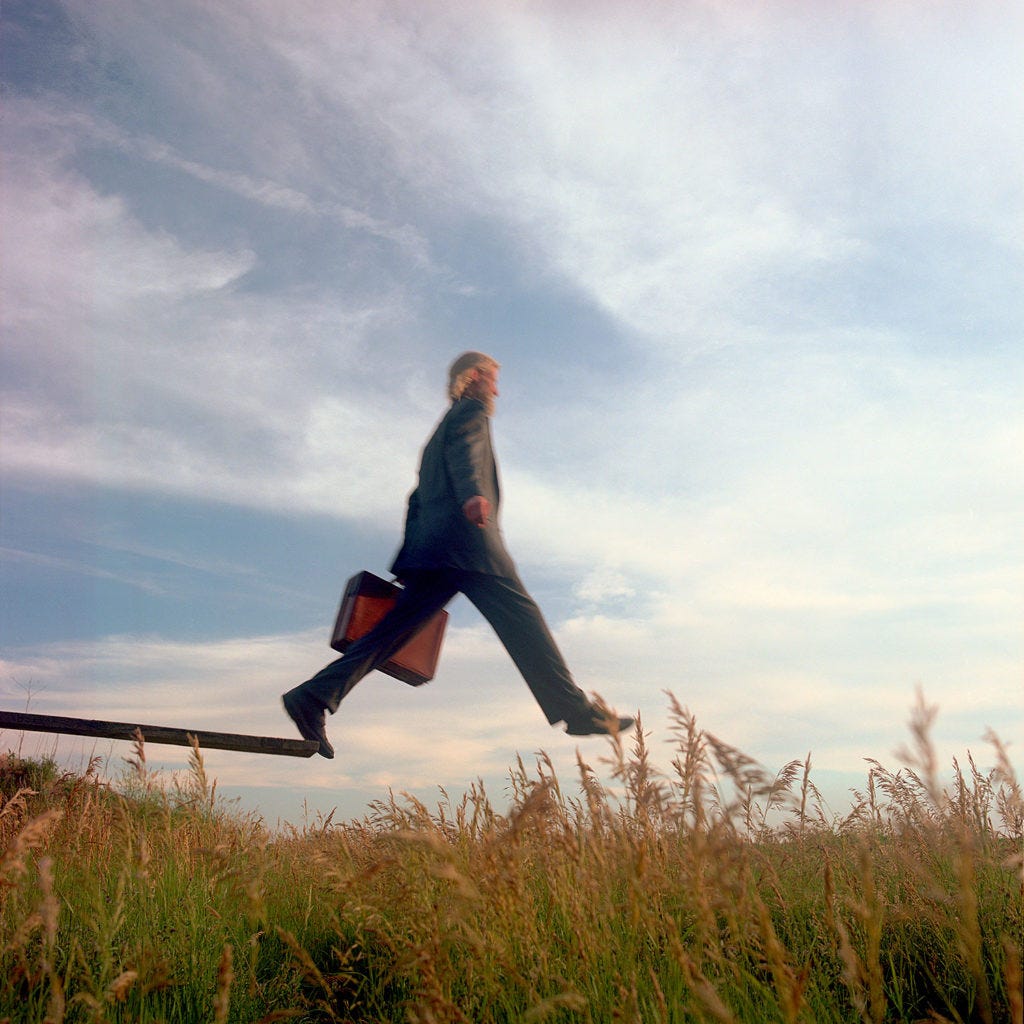Dear subscribers and readers, The internet connection to our village has been out for over a week, so am rather behind with all things online, including writing this month’s columns. I hope to put up the leafy midsummer plant practice post soon. Meanwhile, here is Candance Jensen’s full on sun title page for the upcoming Summer Solstice, zenith of the flower year, from our Eight Fires issue. I hope you have wonderful midsummer fires and parties. Happy sun days and light evenings to you all!
with the animals dying around us
taking our feelings we are saying thank you
with the forests falling faster than the minutes
of our lives we are saying thank you
‘Thanks’ –WS Merwin
At the zenith you leave the party, just as you are having a good time.
from introduction 52 Flowers That Shook My World
‘The face of animals is kind’, said the tall Iranian man with green eyes, as we looked at a guinea pig from Brazil in a glass enclosure. We were in the Potsdam Biosphäre on the performance night of the ‘Myth, Ritual and Practice in an Age of Ecological Catastrophe’ conference, talking about the birth of duality in the Zoroastrian religion. Among the luxuriant tropical greenery, are technological art installations and wild creatures – tortoises and stick insects, marmosets and two psychedelic-coloured iguanas.
‘All animals? I asked him, as the dark-furred rodent gnawed sweetly on grass stems.
‘All,’ he replied. ‘Even lion.’
‘What about eagles?’ I said imagining its fierce beak facing me.
‘Yes, all animals’, he repeated. ‘I have been thinking about this for a long time’.
‘What about humans?’
‘The face of humans is guilty’, he replied.
Afterwards I walked with the stern yet gentle assistant professor from Tehran down the hill to catch the tram back to the hotel. We were people guilty as charged with causing ecological catastrophe but in our non-dualist hearts sometimes also kind, So there could be kinship between strangers in a strange city on this Earth. The nightingales were singing in the gardens of the pre-war villas as we passed by. A half moon hung in the sky.
*
The following morning two young German postgraduates gave a talk about their work on ‘eco-emotions’. They asked the question: what do you do when the grief about living in a climate-stricken world can never go away, a feeling of loss that is always there? They found in their research that keeping some kind of ceremonial practice, linked with time and place, with cherishing the life that is still here – the creatures, the land, our own presences – tempers its ferocity and brings meaning where there was none before.
Each afternoon, Mark would lie down in a quiet place to connect with the inner core of his being, a simple practice that I now follow that I call the finding a still point within in the hurly burly of grief. I don’t always make it. But somehow keeping to the rhythm of the lives as we once led, provides a frame that holds me, grants a steadiness when weathering this storm.
Just before I went to Berlin, I sat on the bench by the Sluice and had the first swim of the year. It was a beautiful day, one those days when the whole coast stretches into infinity, the sun bouncing off the water, terns swooping past. I found myself saying thank you, as if in a farewell. It’s something I have been saying to the flowers as they have appeared and disappeared this spring: snowdrop, cherry plum, lesser celandine, daffodil, bluebell, hawthorn, seakale. It’s a kind of goodbye too from Mark who always love to visit and sit by them. I don’t set out to say it, but somehow a stillness happens when I do:
Thank you, North Sea for being my friend in all these years, thank you for holding me in your salty arms, for connecting me to the vastness of things: thank you for the ribbed Kent sands reaching to the horizon that made my child heart soar, for the sound of you, for the sound of the larks singing over the dunes, to the sea holly that pricked my feet as I ran, that decades later Mark will always photograph in July to catch the magical sight of tiny copper and silver butterflies that love to drink the nectar of its fragrant flowerheads.


Years ago I took part in a ritual on a Scottish hill called 'A Life Cairn’ at a Dark Mountain-inspired event called Carrying the Fire. As we built the cairn, each of us called out the name of an extinct species and placed a stone on the small monument. The silver-studded blue butterfly was one of the names we called out loud.
But these butterflies are still here, I protested, afterwards. They are going that way was the reply. There are not enough of them to thrive.
I am not sure I want to write off a being that is still flitting about the dunes of this coast among the emerging sea hollies and marram grass. But I do know that one day I will not be here, as the butterflies or the plants will be, so in a kind of reverse extinction ritual I am saying thank you to all the plants and places, which have kept me company and made me feel at home. I am saying thank you for having me, the old-fashioned way I was once taught, to the mothers who had invited us to birthday parties, and made all the cakes and sandwiches, and now were placing going away presents into our hands. There is sorrow in the leaving, but also gladness to have been able to be here all these times: cross current feelings that only the heart can hold in one place at one time.
And maybe that is what the Earth is waiting for us all to say, not as a mantra, a moral gratitude, but with words from the heart we really mean, knowing that the eventual death of things is what makes love real. The farewell to places and times keys you into that deep heart where the fire of life lives. The flowers come and go and then return each year, and this cycle tell us how to live in this earth pulse, as the ancestor fires show how to tune into the rise and fall of the light. And maybe because I was born on midsummer’s eve that the intense poignancy held in the zenith of summer solstice speaks to me so directly.
So, in each of these light mornings and evenings now, I sit in the garden, marvelling at the song thrush (also in decline), and the house martin, and the village cuckoo, calling over the full-leaved tree tops. We are all in decline but that does not mean we cannot sing about the beauty that is still in the world. And for one for whom mourning has become a daily reality, to still love and be in relationship with life is perhaps the only thing that makes sense of still being here without Mark.
This series of Substack posts were meant to share our metaphysical practices as the year unfolded. I did not expect when I began them last autumn equinox that another practice would take this shape by summer solstice, and yet the kinship and memory of the heart was really at the basis of all of them.
Speaking with the Heart
In 2008, I put the final touches to a booklet that encapsulated our speaking practices we had been working with for a decade. It was called Speaking with the Heart, and for many years was one of the books that lived ‘under the bed’, slowly becoming compost for other forms: for teaching, essays and performances. It was a guidebook of sorts, giving methods and instructions, and examples from our own experiences with the gridbusters! game, the plant practice and Earth dialogues. And perhaps the most intense of them all, the dreaming practice. It was in tracking our dreams that we found the transformative qualities of the heart: its governance. And in this small publication we catalogued them and showed how they could radically change our interactions: from allowing meaning and coherence to emerge to radical relaxation to valuing bitterness.
One of keys that opened out this practice was finding the feeling within the dream. It is easy with a dream once you have remembered it to describe to say this and that happens. The mind loved to categorise, to become Dr Freud and Dr Jung in sorting out the mysteries of dreams. But as Stephen Aizenstat had instructed many years before: dreams run away from analysis. You have to sit with them, and allow them to reveal themselves with your own kind attention. When spoken out loud with another being a dream can become an event you can both participate in.
Finding the feeling in the dream is usually the last thing you want to do however, hedged with the terrors of childhood faced by the unkindness of the adult world. But it allows the strange alchemy of the heart to transform any inheritance of guilt and repression.
Most of these practices were developed when our working lives did not revolve around the internet. We really only went online when we became community activists in 2008. After that we had to make time and space to tap into heart. We did this each morning and evening, as well as making flower visits and tending to the eight fires of the year.
*
MORNING and EVENING DIALOGUES This morning was a beautiful morning and I took the chairs down to where we often sat on blue summer days underneath the white buddleia where the red tent will appear again, when Lucy’s caravan goes for its annual holiday in France. Here we would sit with the trouble until something found its balance within us. Not one of us triumphing, or solving the dilemma, but engaged with as a living thing we held together. Sometimes action is needed, but sometimes being still matters more, to allow space and time in a furiously paced world, for other things to make themselves known. Where Mark was often cautious, I was headstrong; where my quickness and sanguine nature pushed the work, Mark’s tenacity and patience pulled it back; all these qualities enabled us find the right tempo in the dialogues.
To slow that world down to the pace of the heart and speak from its all-seeing intelligence was the core tenet of the heart practice. Tempo, the speed of the heart, is what keys you into your own feeling being, and thus the spirit that dwells at the still point. To access what might be called the heart frequency. The frequency of the world is fast and furious, not helped by the pace of machines, which go infinitely faster than any creature, and are always demanding we catch up with them.
The Earth’s frequency however continues to go at the same speed it always has: it is when you align with it that later you notice the flowers of the sorrel backlit by the evening sun, now in a blazing descent through the treeline, how they used to shine in our Reydon garden years ago, when we would drink a herbal mead elixir from strawberries and Provencal roses that grew by the green gate to the cottage. How now the same rose has flowered this year from a cutting that a fellow plant person in this village gave us when we first arrived; and how this weekend I will make a jar to drink on midsummer’s day. How everything in non-linear time loops back to the things that matter; to the flowers, to the sun, to Mark. The heart is the keeper of all memories and a beehive of sweetness and nourishment.
Always there. Until it is not.

Keeping the tempo of the heart
The foxgloves stand sentinel on the ridge of Westleton Common, looking over the floor of Pleistocene pebbles and reindeer lichen of what was once a quarry, their tall metronome heads going Tick, tock, tick tock in the rainy breeze, keeping up the tempo. There are hundreds of them this year, just waiting for a break in the furze, this moment of early summer light, to emerge in force.
If your mind is always saying, everything is fucked, everything is gone, it doesn’t matter, or who cares what I do, or any other thing it likes to say about ‘the mess we are in’, you will find yourself trapped in linear time, in those entropic Saturnian rings of history. But if you align with the tempo of the heart, open to the available light on this Earth, you can access a different frequency altogether.
This is what the heart medicine of the foxglove lets you do. It regulates time, stimulating the beat of the heart to be in synch with your whole being and then the world. Its chemical compound, digitalis, made of its poisonous leaves cannot be replicated artificially: it has to be made with the real thing. Our hearts know the real thing when it is in the room, and when it is not: which is why the Empire and all industrial societies go to such lengths to crush its intelligence and provide illusionary substitutes, a host of artificial sweeteners and mechanical rhythms to make us think we are being human, being kind, when we are patently not. This confidence trick is why in England the statistics for heart malfunction and loss of memory are so high.
Most of all, civilisations control the speed at which we understand time, so we are whirling hapless in 24/7 clocktime, terrified of the future, haunted by the past. Putting our feet on the ground, tapping into the Earth’s magnetism, into the beat of the heart, was how all our practices and teachings began: here I am, in time, with you.
When Mark and I emerged from the hotel room in Mexico in 1990, after our breakthrough mushroom encounter, we found ourselves on an Earth we had not until then seen. We had spent it seemed like aeons trying to find the key to the door. And then we found it in ourselves. The room we were leaving belonged to the house of the mind, the house of the past. When we found the key, the door opened out into the future.
The key to this door is time.
The keeper of time is the heart.

Dreaming of the heart
It is easy to think that slowing down to the frequency of the heart is a small insignificant move, but only if you are considering it in terms of ‘well being’, a temporary respite for yourself. Once you key the practice into the rhythm of the world, you see how radical this shift is. In the dreaming practice dialogues, as our attention allowed the dream to open like a flower, you could see how this move affected other levels, from the social to the mythic.
One of the ways to perceive the heart’s move on a larger scale is to look at each dream in terms of movement (including the lack of agency). Often this movement is away from tyranny and servitude. The resistance to feeling in a dream comes from the fact you have to feel the heart’s stuckness and imprisonment in order to liberate its ability to speak out and hold its own.
What follows is a dream about the heart’s challenge from the book:
*
In many dreams, I find myself in a servant position, down there, demeaned, cast into a dungeon. I am told by a past headmistress to stay in the background, former colleagues shun me, I am a secretary bound to work in a dark office while a parade of glittering party people go by. I feel I will never get out. However I also have many dreams of escaping from prison, of finding the door where the sunlight is. Most of these manoeuvres are successful, though in the following one I am thwarted.
BORSTAL BOY
I am a little boy from Borstal who is escaping through a university to a freedom I can glimpse through a window. The more I run the more the buildings seem to belong to the institution and not to outside life. I am acrobatic and fast but I am caught and frog-marched back by an angry woman and man. I can see the root of the woman’s anger and tell her: ‘All women are in competition for men with each other, so you hate each other.’ I am not sure what I have done wrong but I have always been incarcerated.
Wales February 2002
We had many dreams about this little boy. The little boy is completely ignored in the back of the car as Mark drives maniacally to get to the Hotel in time. The little boy is called Solitary at school and shunned but when I speak with him is delighted and loses his speech impediment. The heart is a little autistic boy not because we are childish but because we have been taught to ignore our articulate hearts as we grow up. The heart is not cool, economically viable, or powerful in the ‘adult’ world. It is unpopular because it says the emperor is not wearing any clothes and cannot say I love you if it does not.
In the dream the little boy has always been incarcerated by the System and longs for liberty. This is the human condition. I long for liberty though I have never known it. My heart knows it exists beyond the prison walls and the education system. It knows the cause of the woman’s unhappiness and is detested for saying it out loud. The two people in the dream are my repressors. We all have inner repressors. The world is not run according to the heart. It is run according to the mind and the mind keeps the heart in a borstal, so it does not upset the apple cart and usurp its unnatural rule. It tells the heart from birth ‘it has done something wrong’, so it does not question its imprisonment.
This feeling of having done something wrong often troubles the heart. Of course the heart is never told what its crime is or why it has been punished. One of the hardest things to get beyond is our heart’s innocent acceptance of this. To simply say, as a visitor to the dream might, ‘you haven’t done anything’, is not enough. Human beings have been told for aeons they are wrong and our conditioning is very strong. However even considering this ‘wrongness’ in the light of our dreams is a step towards liberty. Feeling inwardly free is worth everything to the heart. It means it can come into its own. It can express itself at last!
The truth of the matter is of course that one’s repressors have done something wrong in putting us in prison in the first place as substitutes for their own crimes. How one frees oneself from these two forces in our world is the great and mysterious work of the heart. Dreams will show you exactly what form these repressors have taken on the biographical, social and mythological levels, and what energies these are in yourself you have internalised. They will also show you that every human being you know has been subjected to the same treatment.
In the practice, when you are patient and the visitor is patient the heart can learn ways to outsmart these ‘gatekeepers’. The key is in the fact the little boy knows what freedom is and where it is and you have to trust him to lead you there. And you have, like everything else in the practices, to want to go there with him.
(from Speaking with the Heart).
SUPPORTING DARK MOUNTAIN
Mark was not just in charge of the engine room of the Dark Mountain ship, overseeing the business, subscriptions and book distribution, he also held the heart and soul of the project. While others might work or travel elsewhere, Mark was always here at his desk by the window of the front room, holding the fort, keeping watch, keeping up the tempo, Our on deck/below deck working partnership, kept the vessel that is this small publishing house and network on an even keel. Now he has gone, we need to structure the organisation differently and this month are have a crowdfunder in place, asking for help, so we can recalibrate and ensure our work can continue.
All contributions large or small would be very happily received. Details of how to contribute can be found here.
You can find out more about the crowdfunder in the recent Dark Mountain online post Crossing the Chinvat Bridge.
Many thanks all!







Your writing takes us into the energy of the foxgloves, out of linear time, into the heart frequency. It is so expansive, calming, centering, and full of fierce love. Thank you.
Thank you for the remembrance I need